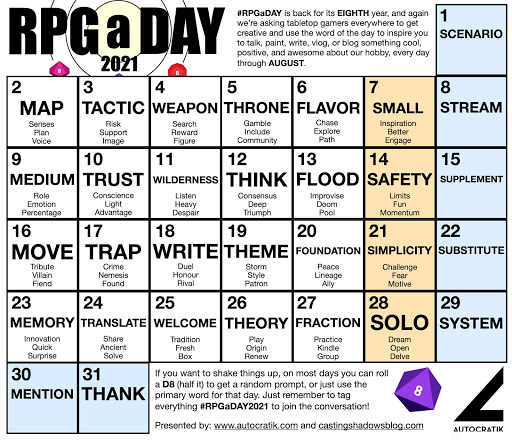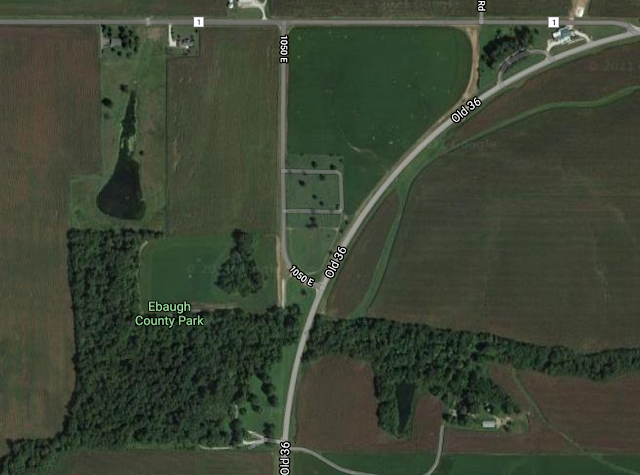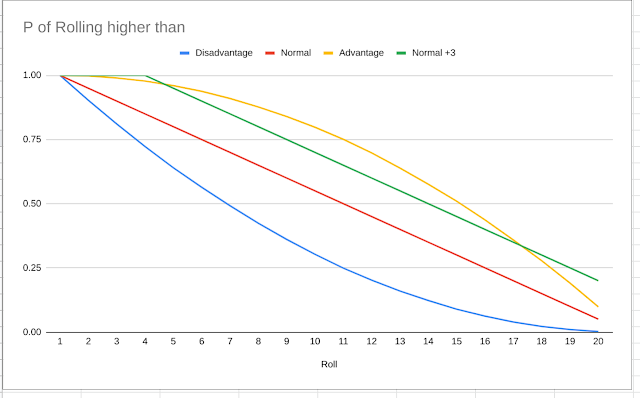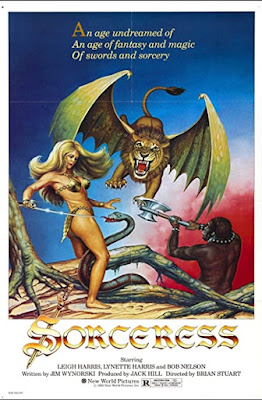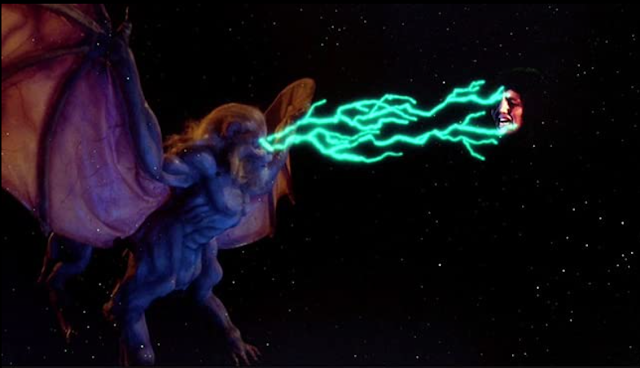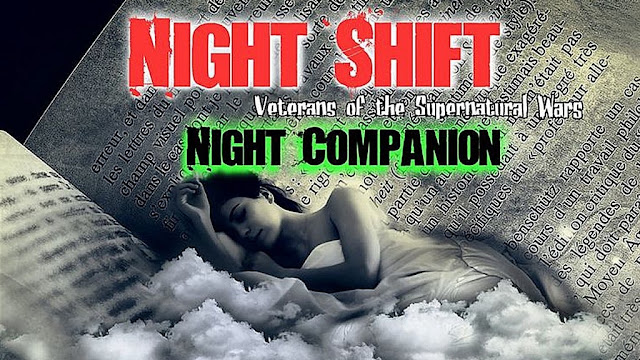 Shadow of Mogg
Shadow of Mogg is so brutally British that it hurts. To play
Shadow of Mogg to its fullest, it is necessary to know where you stand in the First Scone War, the Second Scone War, know how to make a nice hot cup of tea (that is, not using a
microwave), know when to say sorry, know where to stand in the queue, know when exactly is the right moment to complain about your food, know which baked beans are the best, what your class is and where you stand in the
pecking order, and to be a full-on Parliamentary politics wonk. Flying the flag, liking the Royal family, knowing the words to Jerusalem and the right night on which to sing it, understanding when football is coming home, knowing when to invoke the spirit of the Blitz, wearing a Union Jack waistcoat/underpants/dress, hating foxes, loving foxes, hating badgers, loving badgers, loving Mogg, hating Jezza, loving Jezza, hating Mogg, and so on, all optional (or not), but quintessentially British, nonetheless.
Shadow of Mogg is also so contemporary that it is either so right now or so right last week and a satire that is so 2020 that is either still amusing as a commentary on the last five years or a prediction of an alternative future yet to come. Think
Citizen Smith meets
Yes Minister written by Nigel Kneale shot entirely in the studio on a 1970s BBC comedy budget and then updated to 2020 without even a budget increase to allow for inflation, and that would be
Shadow of Mogg.
Published by
Manic Productions following a successful
Kickstarter campaign,
Shadow of Mogg – A Post Brexit RPG is a post-apocalyptic roleplaying game of consensus politics, exploration, and survival in the London underground following ‘The Event’—whatever that was since no-one talks about it or even mentions it. As well as a satire, it is also a co-operative—consensual even—storytelling game with Old School Renaissance styles elements, most notably a dungeon crawl through the tunnels between the stations of the London underground. The players take the role of survivors of this post-‘The Event’ world, the ordinary men and women of the world above forced not only to act together as a Party, but agree upon each and every single action that both every individual and the Party as a whole wants to take. It is almost as if everyone has agreed to become an anarcho-syndicalist commune in which the members take turns to act as a sort of executive-officer-for-the-week, but which all the decisions of that officer must be ratified at a special bi-weekly meeting… All this in the face of an increasingly desperate situation, dwindling resources, and ultimately, tougher and tougher decisions which everyone must agree to.
A character in
Shadow of Mogg has four stats—two Body stats, Hench and Dash, and two Mind stats, Noggin and Bants. Hench is physical stat and his ability to handle himself in a punch up; Dash is his agility and speed and handiness with a gun; Noggin is his awareness and his brains; and Bants (or Banter) is his charisma and silver tongue rolled into one. All stats are rated between one and three. He also has a Class. Each Class provides four skills, one for each stat, two or three items of Stuff, or equipment, some Party Resources—what the character contributes towards the survival of the Party, a Special ability, and a Character Question, which typically asks the nature of the bond the Character has with another Player Character. Some Classes also have Mates who will always support the Player Character. The skills have ratings between one and three, as does the Stuff and Party Resources.
Character generation is easy. The player assigns the numbers three, two, two, and one to his character’s stats. Then he rolls ‘d66’ to determine his character’s Class, notes down all of its details and adds personal details. Many of the Classes are quite mundane, such as Intensive Care Nurse, Church of England Vicar, Brixton Bobby, Black Cabbie, Primary School Teacher, and so on. Others are quite specific, such as Gellar Psychic, RBS Chief Exec, People’s Front of Jezza, Jezza’s People’s Front (splitters!), Mogg Rustler (just what is a Mogg?), and Whigg. All of these Classes are arch satire, but the more specific the Class, the stronger the satire, right up to the Whigg, who might or might not have been the First Lord of the Treasury and/or the Minister for the Civil Service prior to ‘The Event’ (whatever that was).
Dave Trench
Age: 52
Bio: Lifelong Fulham supporter, son of Socialist parents, voted Thatcher (twice), Blair (three times), Cameron (twice, but he was a knob), May (reluctantly), Johnson (once, arse, but good for a laugh), The ‘Event’ (Brilliant!)
Tabloid Journalist
Hench 2 Dash 2 Noggin 1 Bants 3
Skills
Shit Stirring 3 (Bants), Chasing a Lead 2 (Dash), New Hound 2 (Hench), Research 1 (Noggin)
Stuff
Copy of the Daily Mail (1), Flask of Coffee (1), Notepad and pen (1)
Party Resources
1 Molly, 1 Scran
Special
Alternative Facts (Can change a single word in a proposition before it is voted on)
Character Question
Has some dirt on another Player Character—who and what is it?
Instead of acting as individuals, the Player Characters act as a Party, for which the players need to decide what their Party is and what its stands for, its members, laws, and so on. This is recorded on a Party Manifesto Sheet which requires a little set up time and then maintenance during play. The Party Manifesto Sheet also records the Party’s resources—Gubbins, Scran, Slugs, Meds, and Molly—initially contributed by the Player Characters, but can alter as they are scrounged and scavenged, as well as used up and consumed. These use a standard resource die
a la The Black Hack and other Old School Renaissance roleplaying games since. The Party Manifesto Sheet also keeps track of the Party’s Anxiety.
To undertake any kind of action requires a Resolution, which requires a proposition as to a course of action—as in “This Party believes that…”—and this can be over everything and anything. Thus, what direction to travel in, how to interact with someone not of the Party, whether to fight or flee, and of course, who eats first? The latter ultimately, likely to be a bone of contention within the Party and likely to be its downfall if its membership are not all dead of starvation, let alone other causes. Once a proposition has been made, the Speaker—as the Game Master is known—asks each Party member to speak on it in turn, and then once everyone has, asks each Party member to vote on the proposition. If it fails, then another, different proposition is made, and so on and so on until one passes. If it passes, then the proposition is enacted, and if the proposition involves risk, violence, or consequences, then the dice are rolled in a Party Resolution Roll.
Before the dice are rolled, each player assembles a dice pool of six-sided dice equal to the values for any relevant Stats, Skills, Stuff, and Mates. A player can decide not to assemble a dice pool at all or add as many dice equal to the appropriate stat as he wants, but if included, the maximum values for any relevant Skills, Stuff, and a single Mate are added. The player narrates how this contributes to the Party Resolution Roll. Ideally, the colour of the dice for the Stats, Skills, Stuff, and Mates should be different, so that the results can be differentiated. If the highest result on any die is a six, the Party action is a Doubleplus Good success; if the highest result on any die is a five, the Party action is an OkGood partial success with consequences; if the highest result on any die is two, three, or four, the Party action is an UnGood failure; and if the highest result on any die is a one, the Party action is a Doubleplus UnGood or critical failure.
The Speaker narrates the results. Even if the results are a success of any kind, rolls of one on the Stat dice indicate a loss of a point in the appropriate Stat. Reduce Hench or Dash to zero and the player rolls on the Bonk (as in ‘bonk on the head’ rather than the other kind) table or on the Stiff Upper Lip table if Noggin or Bants are reduced to zero. In general, it is better to roll more dice since that reduces the chances of a Doubleplus UnGood or critical failure, but comes with the possibility of roll ones on the Stat dice, so there is a constant friction between taking the risks necessary with a Party Resolution Roll and the rewards to be gained.
In addition, the Speaker also rolls her own pool of dice and they count towards the Player Characters’ success or otherwise in a Party Resolution Roll. The number of dice rolled by the Speaker is equal to the Anxiety rating recorded on the Party Manifesto Sheet. It ranges between one and ten and increases by one when a Player Character dies, when any Stat is reduced to zero, when something horrific is witnessed, when the Party gets into a ruck, and so on. However, it can be reduced through rest, consuming Molly, mediating, and even voting for, punishing, exiling, and even killing a scapegoat—and the scapegoat can be a Player Character or a Mate! This is horridly Stalinist in its approach to internal Party politics, and whilst it has great roleplaying and storytelling potential, it also approaches a line that some players may not want to cross. Should this come up in play, the X-card should definitely be on the table, and this aspect of the game should definitely be explained to all of the players before play begins.
Initially, the Party does not start with any laws, which is odd, since it means that the Player Characters begin play agreeing to be together, but not having agreed to any other Laws or aims or anything at all except for the voting system written into the game. Even that may change if the Party decides it is unhappy with the system!
Shadow of Mogg is played out through the exploration of the stations and tunnels of the Underground using the map included in the back of the book. The Party can travel, scavenge, explore, and rest, the players and their characters expected to work out their own Party-led goals, participate in votes and ensure that all decisions are voted on, and abide by the Speaker’s word.
Her tasks consist of putting the Party into difficult situations—typically generated by the Random Tunnel Events table, that test its members’ morality, loyalty, and will to survive; explore internal Party politics and relations; explore the limits democracy in a post-apocalyptic consensus drive world; and present both the world of the Underground and a growing sense of horror as resources dwindle and conflicts ensue. The Tunnel Events table, divided by the different lines of the London underground are all delightfully thematic, and ultimately, their limited number will determine the length of a game, or rather mini-campaign, of
Shadow of Mogg. That is of course, if the Player Characters do not all die first, which is a possibility, it being a post-apocalyptic roleplaying game set in the grim world of the London underground.
Physically,
Shadow of Mogg is presented in greyscale in a scrapbook fashion. This gives it a singular look, but often makes it a little difficult to read and the organisation could have been better, the Party Manifesto Sheet really needing to be moved back towards the front of the book as it is part of the set-up. The look of the book is that of fanzine, whilst the feel is more that of a professional book.
Obviously,
Shadow of Mogg – A Post Brexit RPG is not literally about Brexit and its effects, but about Brexit and its effects pushed to ridiculous degree—to the point of disaster and beyond. It is also about the truths and untruths of a post-truth world, or rather the effects of truths and untruths of a post-truth world pushed to ridiculous degree—to the point of disaster and beyond. To the point where you cannot agree on what the disaster of The ‘Event’ was, but you can come to agreement on its effects area and what needs to be done to survive those effects, just as long as you vote on it and stand by that vote. Consensus is what matters more than the individual, even if the decision was wrong or goes badly, it was what was agreed upon, and coming to that agreement can involve group think, persuasion, blackmail, secrets, grandstanding, and more, but above opportunities to roleplay. The play is little odd in that because a Party Resolution Roll is required for every decision or action—that is, until laws are passed, enacted, and added to the Party Manifesto Sheet, the game flow may not seem to be as natural as in other roleplaying games, there being a stop-start, stop-start to its play.
The humour of
Shadow of Mogg – A Post Brexit RPG swings back and forth between the tongue in cheek and the satire, but it is a humour that players really need to know and grasp in order to get the most out of the character Classes they play. A great many of them are stereotypes and roleplaying within and around them should be fun and help bring the humour of the satire out. Similarly, there are a lot of terms and details that non-Britons will not be able to grasp easily in this oh so Brexitish satire and despite there being an explanation of the setting’s many terms listed in the back of the book, it still may be enough. Plus, of course, the satire of
Shadow of Mogg – A Post Brexit RPG is so very contemporary that it might date itself very fast. Or not, depending on how soon The Event’ occurs (whatever it actually is…).
Shadow of Mogg – A Post Brexit RPG is a funny, strongly social storytelling roleplaying game. Its humour and even its Brexity subject will not be everyone, but for anyone wanting to roleplay a game of exploration, survival, persuasion, and group decision-making in a very British satire, then
Shadow of Mogg – A Post Brexit RPG is uniquely perfect.

